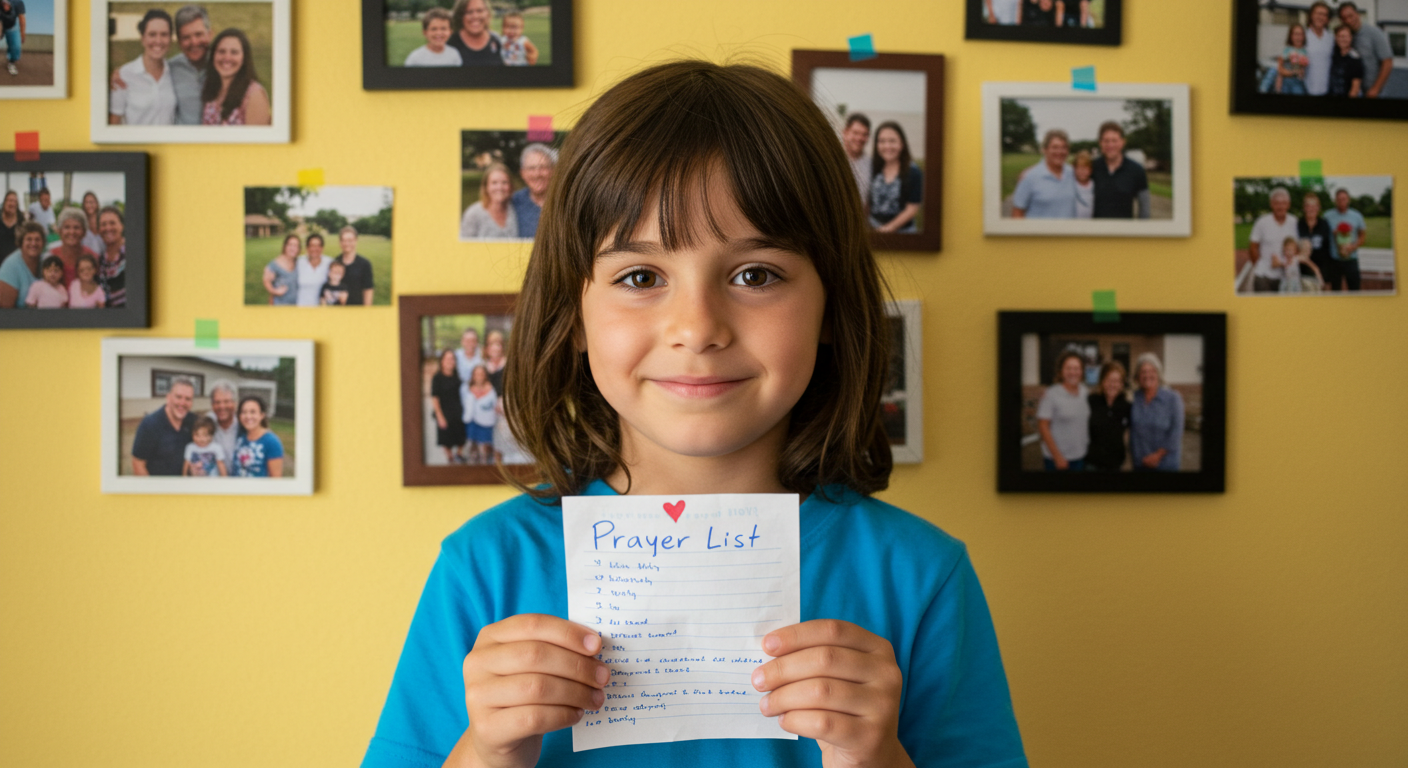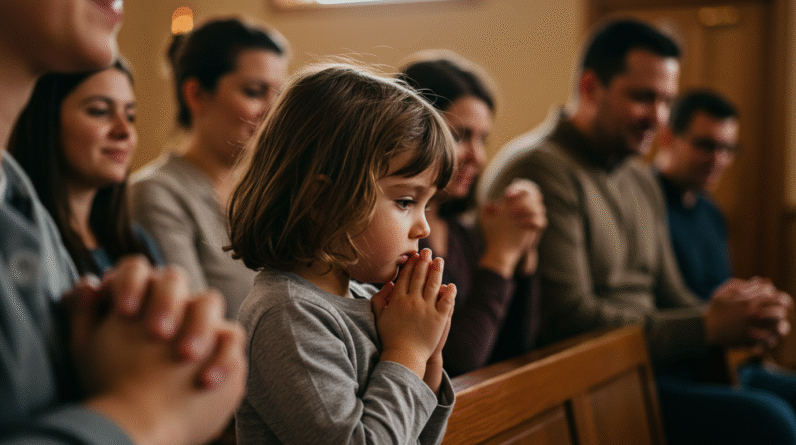Teaching Kids To Pray For Others: Building Compassion Early
Parenting is a journey filled with countless moments where you get to shape young minds and mold compassionate hearts. An essential component of this journey is teaching kids to pray for others. By introducing intercessory prayer, you nurture not just their spiritual growth, but also their ability to empathize and connect with others on a deeper level. This article aims to guide you through encouraging this practice with your children and discuss the profound impact it can have on their development as compassionate individuals.
Why Teaching Kids To Pray For Others Matters
Prayer is often a cornerstone of many faith-based households, serving as a method of communication with the divine and a means to express gratitude, ask for guidance, and seek comfort. When you introduce the concept of praying for others, you’re expanding the horizons of your kids’ understanding of prayer. It moves them beyond personal needs and desires and opens their hearts to the world around them. This practice can nurture kindness, teach empathy, and help them understand that life is interconnected, and their actions, even prayers, can ripple out to affect the lives of others.
The Power of Empathy Through Intercessory Prayer
Empathy is the ability to understand and share the feelings of another. According to studies in child psychology, children who practice empathy are more likely to become adults who are aware of social justice issues, are compassionate, and are conscious of the well-being of others. Teaching kids to pray for others lays the groundwork for developing empathy by encouraging them to think about and internalize the experiences and needs of other people.
Building a Foundation in Compassionate Living
When kids learn to pray for someone else, they internalize the importance of thinking about others. Asking a child to consider someone else’s needs and emotions helps them step outside their immediate concerns and understand the bigger picture. They begin to see the world as a complex network of lives, all intertwined, where every action and thought can have significant consequences.
Practical Steps on Teaching Kids To Pray For Others
Most tasks, including teaching kids to pray for others, can be made easier with structured guidance. Here are several practical strategies you might find useful.
Create a Prayer Routine
Building a habit starts with consistency. Establish a specific time each day for prayer; this could be before meals, at bedtime, or any other moment that fits well within your family’s daily schedule. During this time, encourage your child to think about someone else in need—a family member, a friend, or even someone they’ve heard about in the news. This steady routine can reinforce compassion as a core value in their life.
Discuss the Needs of Others
Children are naturally curious, often asking questions about the world around them. Use these moments to bring up the needs of others and discuss them openly. For instance, if they ask why a certain someone is sad or worried, use it as an opportunity to encourage a prayer for that person’s well-being. Discussing these needs makes the problems of others relatable and fosters an environment of awareness and empathy.
Integrate Stories and Real-Life Examples
Stories can be incredibly powerful tools for communicating complex ideas to children. Use tales from Scripture or children’s books that speak to the circumstances other people face. Relatable stories can spark your child’s interest and encourage them to pray for others. You can also share real-life examples, such as someone in your community who is going through a tough time, and guide them in offering a simple, heartfelt prayer in response.

Biblical Foundations of Praying for Others
For families practicing Christianity, biblical teachings can serve as a strong foundation for this aspect of upbringing.
Jesus’ Teachings on Prayer
The teachings of Jesus emphasize the importance of compassion and love for one’s neighbor, making prayer for others a significant act of kindness. In Matthew 5:44, Jesus commands, “But I tell you, love your enemies and pray for those who persecute you” Verse. This verse is a potent reminder that our prayers should extend to all, even those with whom we might not agree. Introducing kids to this perspective can cultivate considerable maturity and depth in their spiritual lives.
Paul’s Guidance on Intercessory Prayer
The letters of Paul also provide valuable insight into praying for others. In 1 Timothy 2:1, he writes, “I urge, then, first of all, that petitions, prayers, intercession and thanksgiving be made for all people.” Verse. These passages can encourage children to include various people in their prayers—not just family and friends but also leaders, teachers, and those experiencing hardship.
Role of the Lord’s Prayer
The Lord’s Prayer, found in Matthew 6:9-13, is a guide that resonates with inclusivity and collective spirituality Verse. This prayer nuances the request for “our daily bread,” which symbolizes the physical and spiritual nourishment needed by all of humanity. Teaching kids to frame their prayers around the principles of the Lord’s Prayer can weave in an instinctive understanding that our requests should be as much about others as about ourselves.
Overcoming Challenges in Teaching This Practice
As with any new habit, there can be challenges. Understanding these barriers ahead of time can make the task smoother for both you and your child.
The Short Attention Span Dilemma
It’s important to remember that children, especially younger ones, naturally have short attention spans. Keep prayer sessions short and to the point, focusing on one person or specific situation. You can gradually increase the duration and complexity of your sessions as your child’s ability to focus and their understanding grow.
Making Abstract Concepts Tangible
Children can find abstract concepts like empathy or the unknown power of prayer hard to grasp. To address this, use metaphors or tangible examples that can resonate with their daily life. For instance, compare the act of praying for someone to giving them a hug or a smile—something they know brings comfort and happiness to others.
Inspiring Long-Term Compassionate Behavior
Fostering a lifelong appreciation and practice of empathy can begin with teaching kids to pray for others. Here’s how you can nurture this habit into adulthood.
Role-Model the Behavior You Wish to See
Children learn a great deal from observing the adults around them. Actively demonstrate the importance of praying for others in your own life. Share stories of how intercessory prayer has impacted your outlook and relationships. Your authentic and visible dedication will naturally encourage them to embrace the habit.
Encourage Community Engagement
Inspire your child to extend their compassion beyond prayer by engaging them in community service or charitable activities. Participating in these events can solidify their understanding of empathy and demonstrate how prayers can be supported by action.
Provide Positive Reinforcement
Offer praise and reinforcement when you notice your child empathically considering others. Acknowledging their effort reinforces the behavior and the understanding that they are making a positive impact on the world around them, even through simple gestures like prayer.
Conclusion: Planting Seeds of Compassion
Teaching kids to pray for others is not just about instilling a religious practice; it’s about nurturing the next generation of compassionate, empathetic individuals. The ability to feel and express empathy is a skill that will support them in all aspects of life, helping them create more meaningful relationships and contributing to a kinder world.
Explore More
For further reading and encouragement, check out these posts:
👉 7 Bible Verses About Faith in Hard Times
👉 Job’s Faith: What We Can Learn From His Trials
👉 How To Trust God When Everything Falls Apart
👉 Why God Allows Suffering – A Biblical Perspective
👉 Faith Over Fear: How To Stand Strong In Uncertain Seasons
👉 How To Encourage Someone Struggling With Their Faith
👉 5 Prayers for Strength When You’re Feeling Weak

📘 Jesus and the Woman Caught in Adultery – Grace and Mercy Over Judgement
A powerful retelling of John 8:1-11. This book brings to life the depth of forgiveness, mercy, and God’s unwavering love.
👉 Check it now on Amazon
As a ClickBank Affiliate, I earn from qualifying purchases.
Acknowledgment: All Bible verses referenced in this article were accessed via Bible Gateway (or Bible Hub).
“Want to explore more? Check out our latest post on Why Jesus? and discover the life-changing truth of the Gospel!”








